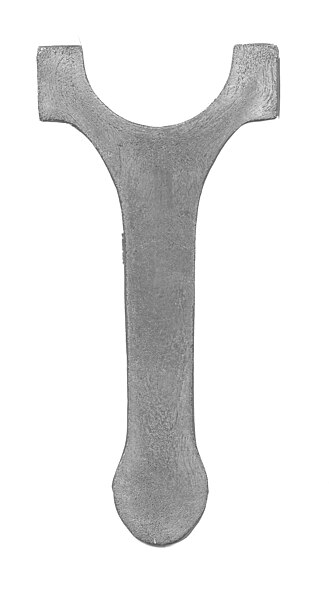Forging is a manufacturing process involving the shaping of metal using localized compressive forces. The blows are delivered with a hammer or a die. Forging is often classified according to the temperature at which it is performed: cold forging, warm forging, or hot forging. For the latter two, the metal is heated, usually in a forge. Forged parts can range in weight from less than a kilogram to hundreds of metric tons. Forging has been done by smiths for millennia; the traditional products were kitchenware, hardware, hand tools, edged weapons, cymbals, and jewellery.
Hot metal ingot being loaded into a hammer forge
A billet in an open-die forging press
A cross-section of a forged connecting rod that has been etched to show the grain flow
Open-die drop forging (with two dies) of an ingot to be further processed into a wheel
A forge is a type of hearth used for heating metals, or the workplace (smithy) where such a hearth is located. The forge is used by the smith to heat a piece of metal to a temperature at which it becomes easier to shape by forging, or to the point at which work hardening no longer occurs. The metal is transported to and from the forge using tongs, which are also used to hold the workpiece on the smithy's anvil while the smith works it with a hammer. Sometimes, such as when hardening steel or cooling the work so that it may be handled with bare hands, the workpiece is transported to the slack tub, which rapidly cools the workpiece in a large body of water. However, depending on the metal type, it may require an oil quench or a salt brine instead; many metals require more than plain water hardening. The slack tub also provides water to control the fire in the forge.
The inside of a typical smithy in Finland
Wooden smithy built in 1726 in Opole, Upper Silesia, Poland
A smithy built around 1880 in Mērsrags, Courland, Latvia currently located at The Ethnographic Open-Air Museum of Latvia
A forge fire for hot working of metal








